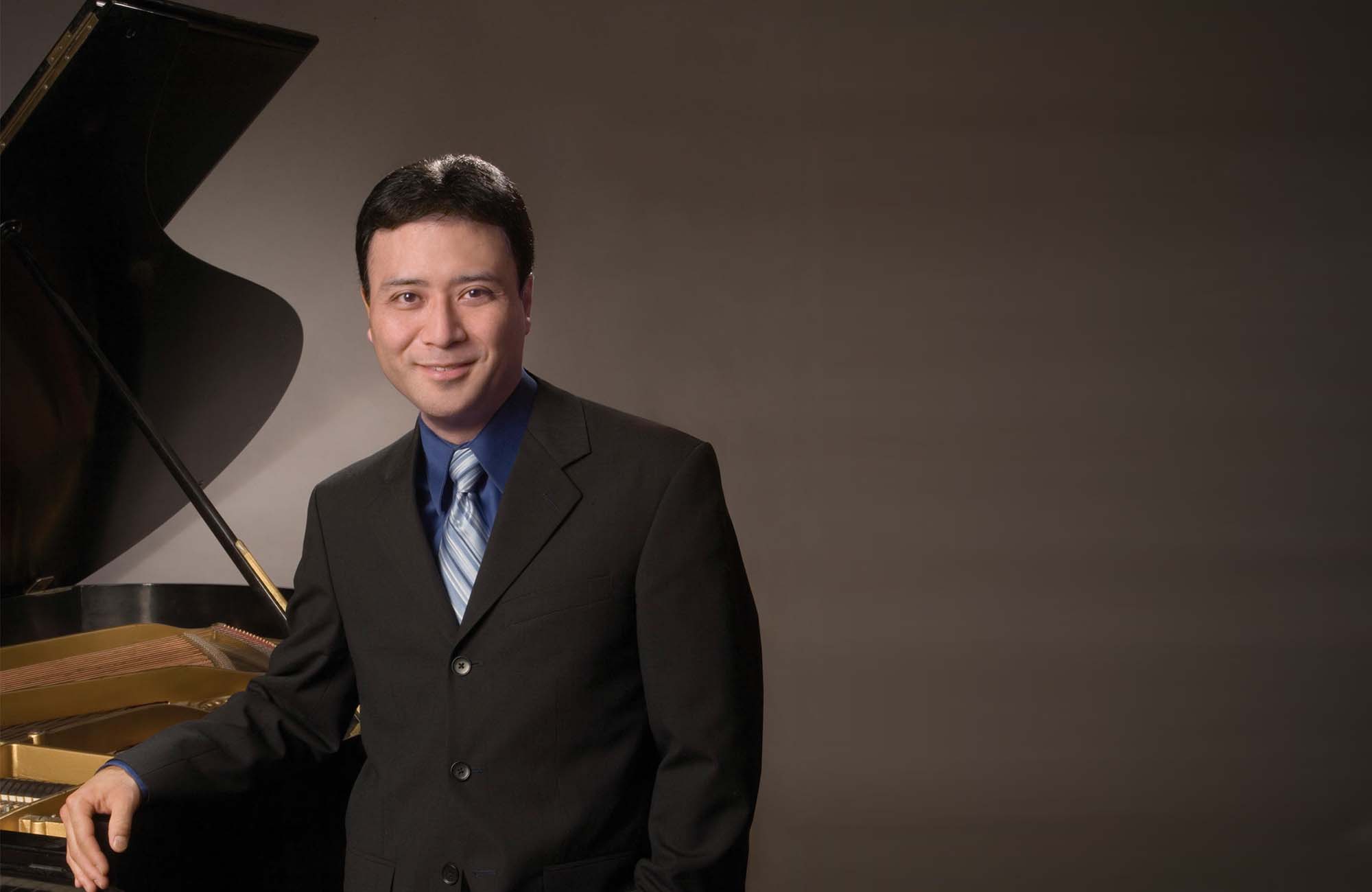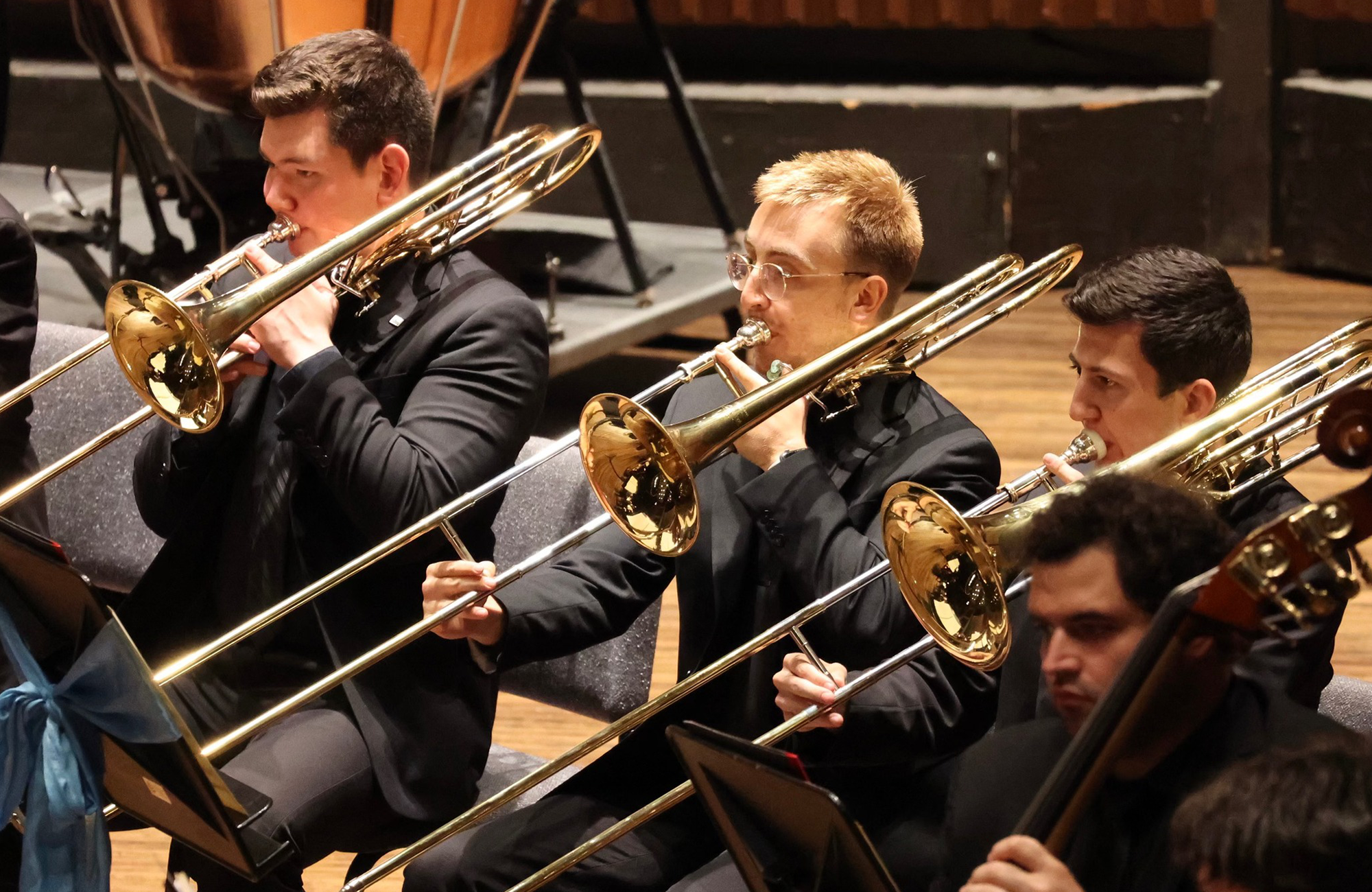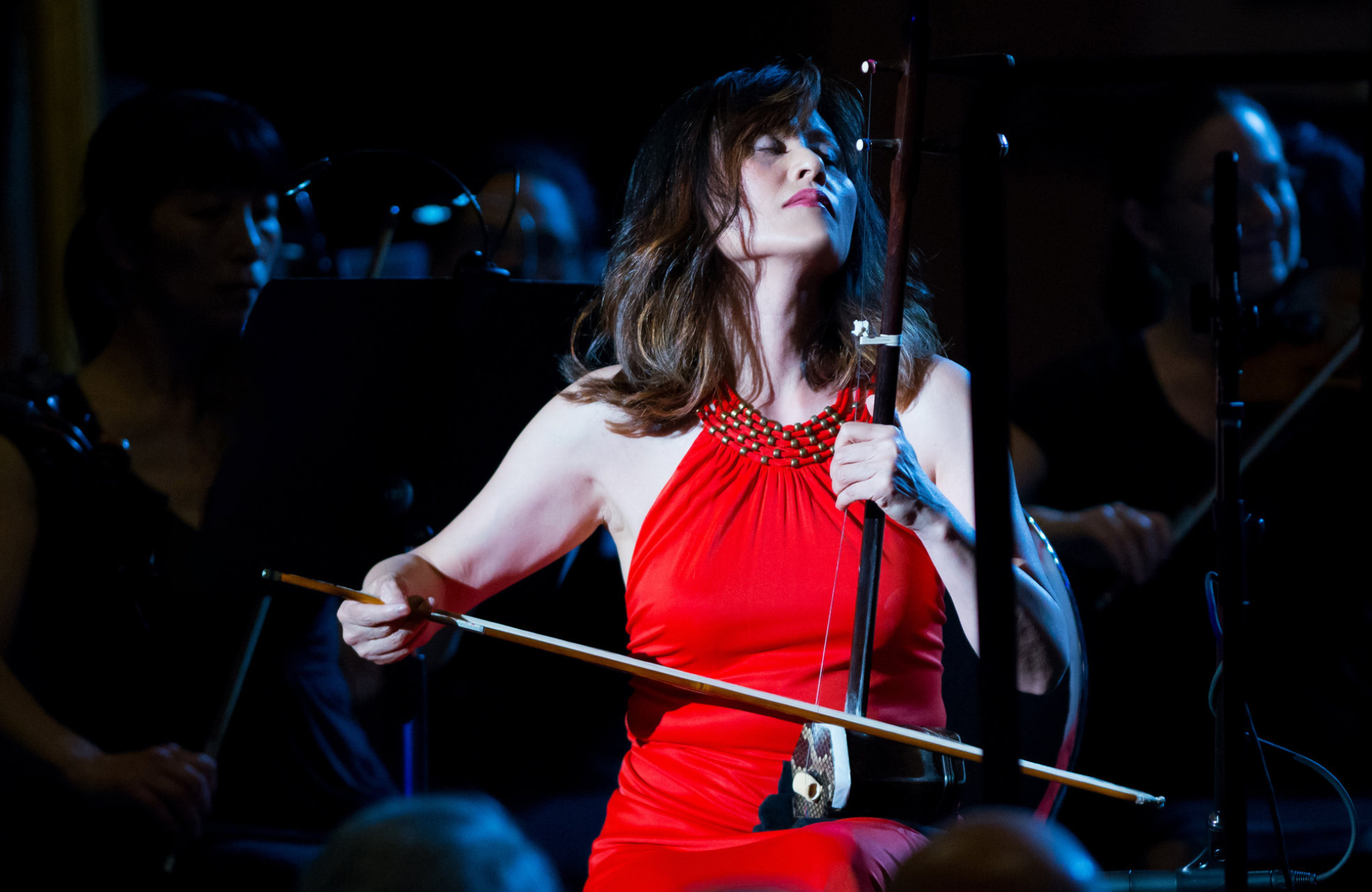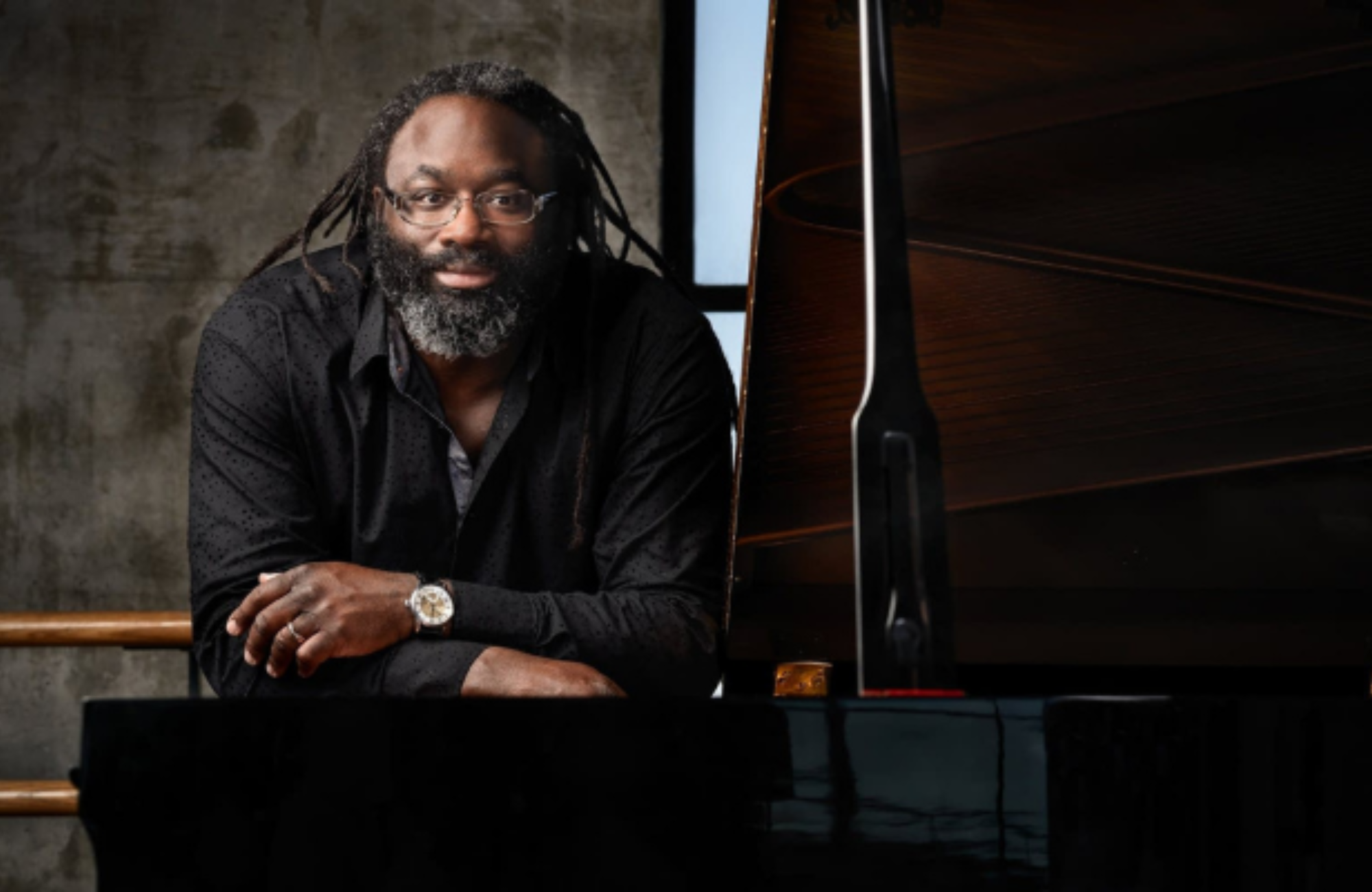Jon Nakamatsu returns to Syracuse to perform Maurice Ravel’s Concerto in G. You’ll love Samuel Coleridge-Taylor’s picturesque Ballade and the concert closes with Sergei Rachmaninoff’s Symphony No. 3.
Please read our COVID policies here
PROGRAM
COLERIDGE-TAYLOR: Ballade in A Minor, op 33
RAVEL: Concerto in G major for Piano and Orchestra
RACHMANINOFF: Symphony No.3 in A minor, op.44
PROGRAM NOTES
Tonight’s three composers—Samuel Coleridge-Taylor (1875–1912), Maurice Ravel (1875¬¬–1937), and Sergei Rachmaninoff (1873–1943)—were born less than three years apart. Today, of course, Ravel and Rachmaninoff are better known; but back in 1898, things were different. Rachmaninoff was reeling from the failure of his First Symphony, a failure so complete that he abandoned composing for years. Ravel was about to be kicked out of his composition class at the Conservatoire for failing fugue exams twice. Coleridge-Taylor, in contrast, was on an upward trajectory.
Elgar had been asked to write a piece for the prestigious Three Choirs Festival. Since he was ...
Tonight’s three composers—Samuel Coleridge-Taylor (1875–1912), Maurice Ravel (1875¬¬–1937), and Sergei Rachmaninoff (1873–1943)—were born less than three years apart. Today, of course, Ravel and Rachmaninoff are better known; but back in 1898, things were different. Rachmaninoff was reeling from the failure of his First Symphony, a failure so complete that he abandoned composing for years. Ravel was about to be kicked out of his composition class at the Conservatoire for failing fugue exams twice. Coleridge-Taylor, in contrast, was on an upward trajectory.
Elgar had been asked to write a piece for the prestigious Three Choirs Festival. Since he was over-committed, he recommended that the commission be directed to Coleridge-Taylor instead—a man he deemed the “cleverest” of the young British composers of the time (a group that included Holst and Vaughan Williams). The resulting work, the Ballade, op. 33, was a tremendous success, and the composer had reason to be confident of his future. And any confidence would have been justified: His choral work Hiawatha’s Wedding Feast, unveiled just a few months later, was such a world-wide hit that, for many years, it stood up to Handel’s Messiah in terms of popularity.
The Ballade is not quite typical of Coleridge-Taylor. Many of his later works incorporated his Black heritage, as well as Native American elements. The Ballade, not surprisingly given its origins, is more solidly European in spirit, reminiscent of Brahms and Elgar in its muscularity and Tchaikovsky and Grieg in its heartfelt lyricism (the second theme is especially gorgeous). It’s a touch sentimental in spots, too, looking ahead to the “light music” that he had to churn out later in life to stave off starvation. (He sold the rights to Wedding Feast for a pittance, losing out on the royalties that would have secured his well-being.) But it’s sentimentality with total conviction.
We don’t know what trajectory Coleridge-Taylor would have followed if he had not died of pneumonia brought on by overwork. But we do know the artistic trajectories of Ravel and Rachmaninoff; and although the composers are, in many ways, polar opposites (Rachmaninoff the heart-on-the-sleeve romantic, Ravel the precise craftsman), their careers followed a similar route. As they grew older, both produced less; for many listeners, however, their work got better and better.
Ravel’s 1930–31 Concerto in G is the next-to-last work he composed, and there’s good reason for calling it a distillation of his art. Ravel is known as a cool, ironic, anti-romantic. Stravinsky dubbed him the “Swiss watchmaker,” and even at his most spectacular (say, Bolero which we’ll be including on our next Masterworks concert), there’s a sense of control. As tonight’s soloist Jon Nakamatsu puts it, “Every note in the Concerto is perfect.” Explicitly modeled on the classicism of Mozart and Saint-Saëns, it is, for the most part, both light and light-hearted. It begins with what sounds like a ringmaster’s whip, ushering in a first movement of riotous circus activity—and the finale has a similar carnivalesque quality.
Both movements show the influence of jazz—but they’re not really jazz. As Jon points out, “The material has roots in that genre,” but the execution is another matter. He clarifies by comparing Ravel and Gershwin. Yes, the Ravel has a lot of Gershwin hallmarks (not surprising, since the two composers greatly admired each other). There are, for instance, the “incredible melodies and lazy harmonies that relax you.” There’s also the high energy drive: “The third movement of the Gershwin Concerto,” says Jon, “is similar to the third movement of the Ravel with its machine-like quality.”
Still, the differences between Gershwin and Ravel are significant, too. Jon suggests that some of them are parallel to the language differences between American English and French. Thus, even though it’s “jagged,” the Ravel (“entertaining but not super-aggressive”) has a “softer edge.” More important—to return to the issue of jazz—“in Gershwin, you have that possibility of moving things around, swinging things a bit.” If you did that with Ravel, it would “sound un-French.” Specifically, Ravel has a more “disciplined element of structure and order,” and the intricacies of the connections between the piano and orchestra prevent you from taking the same “personal liberties.”
Yet there’s another dimension to the Ravel. Between these two jazz-infused outbursts of joie-de-vivre is a slow movement, written under the spell of the Mozart Clarinet Quintet, where Ravel is at his most romantically profound. Jon fell in love with the Ravel when a teenager—and it was this movement that did it, “one of the deepest and most soul-searching, haunting pieces in the repertoire.” Its high point is the ending, with an “incredible English horn solo,” which Ravel has scored in “a perfect way.” Specifically, says Jon, it’s the “ideal register for the instrument; and above that solo, the piano is doing the most amazing things.” It’s also hard, even “scary,” to perform. “Sometimes, I think I’d rather hear it than do it; but when it works, it is really one of the best feelings, the most chamber-like moments, in all concertos. And how often do I get to play with an English horn?”
It’s not easy to catch the tone of this movement. Ravel’s mysterious final illness was just beginning to stalk him, which “must have scared him to death.” Yet while the slow movement is “melancholy,” it’s not “morbid”—and it’s followed by a Presto that seems to be asking us not to take it too seriously. All in all, says Jon, “The piece is a little mysterious!”
Rachmaninoff’s Symphony No. 3, written in 1935–36, thirty years after his popular Second, is also the composer’s next-to-last piece—and also a distillation of his art. Or, at least, a distillation of his late art. Rachmaninoff composed little after he left Russia in 1917, and what he did produce was increasingly lean and concentrated. In this regard, the Third Symphony looks ahead to the Symphonic Dances.
True, there’s much that looks back to the earlier Rachmaninoff, too. As I’ve said, he’s known as a somber romantic. In fact, his supposed conservatism was held against him by snobs for decades. And those looking for the Rachmaninoff glower can certainly find it here. For instance, the symphony is bound together by a dark, fatalistic motto theme, as was the Second (and, not coincidentally, the Fourth and Fifth Symphonies of his beloved Tchaikovsky). And like so many of Rachmaninoff’s works, including that ill-fated First, it makes use of the plainchant Dies irae theme that represents the “Day of Wrath,” popularized in symphonic writing by Berlioz’s Symphony fantastique. Then, too, the symphony has the strong melodic pull that has made his earlier works so popular. The second theme of the first movement is especially luscious.
Yet if the Second is a vast canvas in oils, the Third has more of a mosaic quality. The basic units are smaller, the surface more often disrupted. Conductor Larry Loh points, for instance, to the complexity of the rhythms: “The first rhythmic section in the first movement is completely off kilter, so off balance and unexpected.” The structure—three movements rather than the traditional four—runs against expectations, too. Rachmaninoff gets down to three movements by mushing two movements together. The second movement begins as a typical Rachmaninoff slow movement, but it turns into a slashing, sharp-edged Scherzo before it returns to its original mood. There’s something unusual in the nature of the melodies, too. The score is full of melodies with a flavor of Russian Orthodox chant. “That sets the tone for the mysterious nature of his melodies,” says Larry. “A lot of them expand outward from an economy of notes.” You’ll hear this technique toward the beginning of the piece. After the brief introduction, with the motto, we get the first theme, played on bassoons and oboes—“a compressed theme that expands outward, becoming so ravishing when the full strings come in.” Finally, the orchestration has a new level of imagination; Larry points to the unusual texture of the opening of the second movement, with its horn solo and harp. “It’s completely inventive.”
The result is the kind of piece Larry likes best: a work with a deeper meaning, rather than one that’s “superficial or written to be enjoyed in a very generic way.” The Rachmaninoff Third, like the central movement of the Ravel, is particularly impressive for what Larry calls its “later-in-life-perspective.” We’ve come a long way from the youthful confidence of the Coleridge-Taylor.
Peter J. Rabinowitz
Have any comments or questions? Please write to me at prabinowitz@ExperienceSymphoria.org
FEATURED ARTISTS
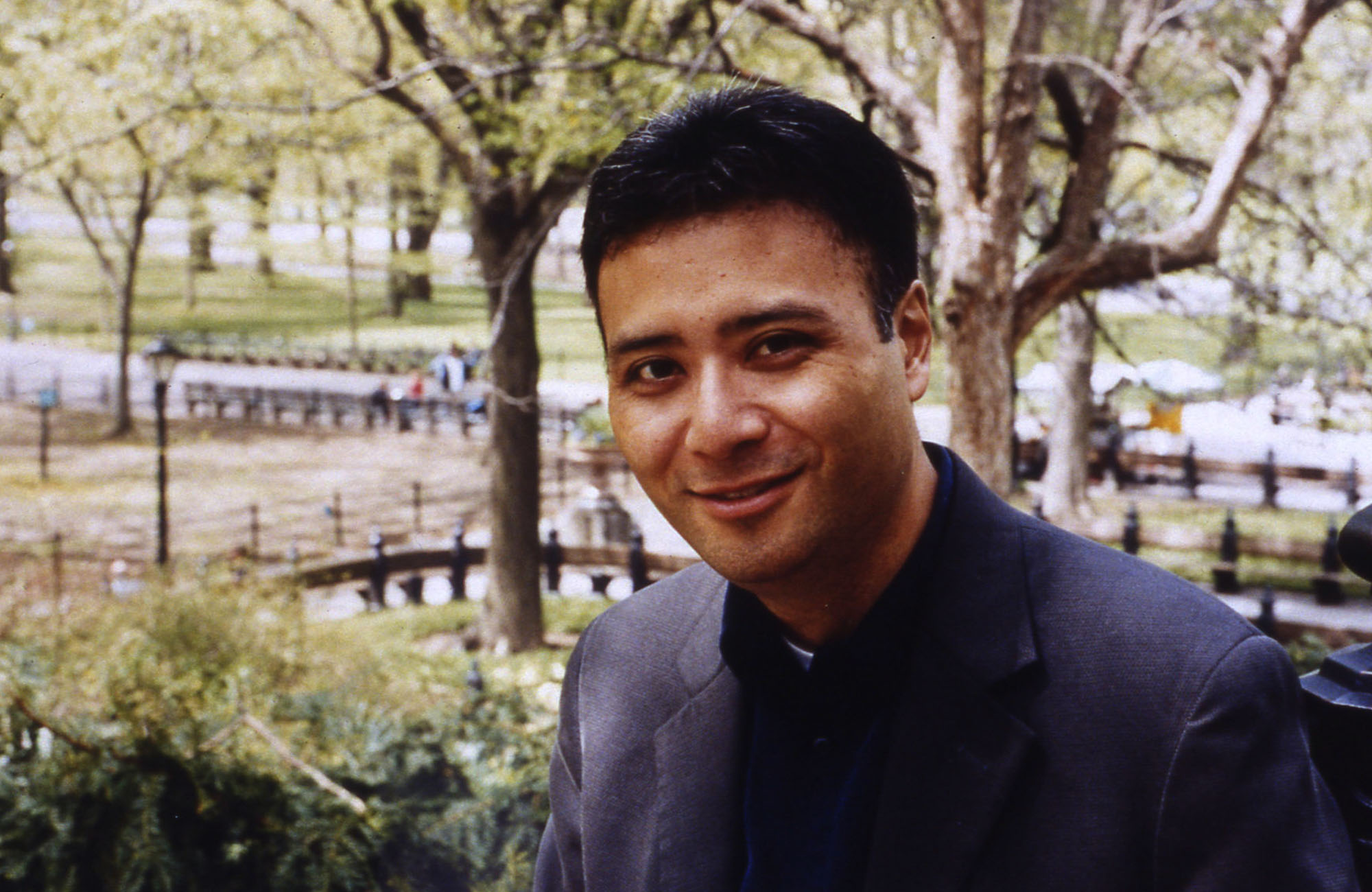
Now in his third decade of touring worldwide, American pianist Jon Nakamatsu continues to draw critical and public acclaim for his intensity, elegance and electrifying solo, concerto and chamber music performances. Catapulted to international attention in 1997 as the Gold Medalist of the Van Cliburn International Piano ...
Now in his third decade of touring worldwide, American pianist Jon Nakamatsu continues to draw critical and public acclaim for his intensity, elegance and electrifying solo, concerto and chamber music performances. Catapulted to international attention in 1997 as the Gold Medalist of the Van Cliburn International Piano Competition—the only American to achieve this distinction since 1981—Mr. Nakamatsu subsequently developed a multi-faceted career that encompasses recording, education, arts administration and public speaking in addition to his vast concert schedule.
In 2021, Mr. Nakamatsu returned to live performances throughout the United States and in Europe. Between 2020 and the spring of 2021, he was engaged in a myriad of online events including recording, masterclasses and virtual interviews and lectures for organizations such as Chautauqua Institution Piano Festival, Colorado College Summer Music Festival, Boston University’s Tanglewood Institute, Van Cliburn Foundation and Chopin Foundation of the United States. In collaboration with clarinetist Jon Manasse, Mr. Nakamatsu also produced and curated an online series of interviews and historical performances taken from the archives of Cape Cod Chamber Music Festival, where he and Mr. Manasse have served as Artistic Directors since 2007.
Mr. Nakamatsu has been guest soloist with over 150 orchestras worldwide, including those of Baltimore, Berlin, Boston, Cincinnati, Dallas, Detroit, Florence, Los Angeles, Milan, San Francisco, Seattle, Tokyo and Vancouver. He has worked with such esteemed conductors as Marin Alsop, Sergiu Comissiona, James Conlon, Philippe Entremont, Hans Graf, Marek Janowski, Raymond Leppard, Gerard Schwarz, Stanislaw Skrowaczewski, Michael Tilson Thomas and Osmo Vänskä.
As a recitalist, Mr. Nakamatsu has appeared in New York City’s Carnegie Hall and Lincoln Center, Washington DC’s Kennedy Center for the Performing Arts, Musée d’Orsay and Théâtre du Châtelet in Paris and in major centers such as Boston, Chicago, Houston, London, Milan, Munich, Prague, Singapore, Warsaw and Zurich. In Beijing he has been heard at the Theater of the Forbidden City, the Great Hall of the People, China Conservatory, and National Centre for the Performing Arts. His numerous summer engagements included appearances at the Aspen, Tanglewood, Ravinia, Caramoor, Vail, Wolftrap, Colorado, Brevard, Britt, Colorado College, Evian, Interlochen, Klavierfestival Ruhr, Santa Fe and Sun Valley festivals. In 2024 he will participate in an extended residency at Bowdoin Festival in Maine and return to Chautauqua Institution in New York where he has served as Artist-in-Residence since the summer of 2018.
With clarinetist Jon Manasse, Mr. Nakamatsu tours as a member of the Manasse/Nakamatsu Duo. Following its Boston debut in 2004, the Duo released its first CD for harmonia mundi usa (Brahms Sonatas for Clarinet and Piano) which received the highest praise from The New York Times Classical Music Editor, James Oestreich, who named it among the “Best of the Year” for 2008. A frequent chamber musician, Mr. Nakamatsu has collaborated repeatedly with ensembles such as the Emerson, Escher, Jupiter, Miró, Modigliani, Prazak, St. Lawrence, Tokyo and Ying string quartets, Imani Winds and Berlin Philharmonic Wind Quintet with whom he made multiple tours beginning in 2000. Mr. Nakamatsu’s 13 CDs recorded for harmonia mundi usa have garnered extraordinary critical praise. An all-Gershwin recording with Jeff Tyzik and Rochester Philharmonic Orchestra featuring Gershwin’s Rhapsody in Blue and Concerto in F remained in the top echelons of Billboard’s classical charts for over six months. Other acclaimed discs include the recording premiere of Lukas Foss’ first Piano Concerto with Carl St. Clair and Pacific Symphony, Brahms Piano Quintet with Tokyo String Quartet in the quartet’s final recording as an ensemble, and a solo recording including Robert Schumann’s Second Piano Sonata whose YouTube posting has garnered over 600K hits.
Mr. Nakamatsu has been profiled extensively in print, radio, television and online. He has appeared on CBS Sunday Morning, in Readers Digest magazine and recently on Live from Here! with Chris Thile. In 1999, Mr. Nakamatsu performed at The White House at the special invitation of President and Mrs. Clinton. He has also performed for the United States Mayor’s Convention in San Francisco and in 2001 was the featured guest artist during the opening and dedication of the Japanese American Memorial to Patriotism During World War II in Washington DC.
A former high school teacher of German with no formal conservatory training, Mr. Nakamatsu studied privately with Marina Derryberry for over 20 years beginning at the age of six; worked with Karl Ulrich Schnabel since the age of 9; and trained for 10 years in composition, theory and orchestration with Dr. Leonard Stein of University of Southern California’s Schoenberg Institute. Mr. Nakamatsu holds undergraduate and graduate degrees from Stanford University in German Studies and secondary education. In 2015, he joined the piano faculty of San Francisco Conservatory of Music and in 2023 the Department of Music at Stanford University. He lives in the Bay Area with his wife Kathy and young son Gavin.

Described as bringing an “artisan storyteller’s sensitivity… shaping passages with clarity and power via beautifully sculpted dynamics… revealing orchestral character not seen or heard before” (Arts Knoxville) Lawrence Loh enjoys a dynamic career as a conductor of orchestras all over the world.
After an extensive two ...
Described as bringing an “artisan storyteller’s sensitivity… shaping passages with clarity and power via beautifully sculpted dynamics… revealing orchestral character not seen or heard before” (Arts Knoxville) Lawrence Loh enjoys a dynamic career as a conductor of orchestras all over the world.
After an extensive two year search, Lawrence Loh was recently named Music Director of the Waco Symphony Orchestra beginning in the Spring of 2024. Since 2015, he has served as Music Director of The Syracuse Orchestra (formerly called Symphoria), the successor to the Syracuse Symphony Orchestra. “The connection between the organization and its audience is one of the qualities that’s come to define Syracuse’s symphony as it wraps up its 10th season, a milestone that might have seemed impossible at the beginning,” (Syracuse.com) The Syracuse Orchestra and Lawrence Loh show that it is possible to create a “new, more sustainable artistic institution from the ground up.”
Appointed Assistant Conductor of the Pittsburgh Symphony in 2005, Mr Loh was quickly promoted to Associate and Resident Conductor within the first three years of working with the PSO. Always a favorite among Pittsburgh audiences, Loh returns frequently to his adopted city to conduct the PSO in a variety of concerts. Mr. Loh previously served as Music Director of the West Virginia Symphony Orchestra, Music Director of the Northeastern Pennsylvania Philharmonic, Artistic Director and Principal Conductor of the Syracuse Opera, Music Director of the Pittsburgh Youth Symphony Orchestra, Associate Conductor of the Dallas Symphony Orchestra, Associate Conductor of the Colorado Symphony Orchestra and Music Director of the Denver Young Artists Orchestra.
Mr. Loh’s recent guest conducting engagements include the San Francisco Symphony, Dallas Symphony, North Carolina Symphony, Baltimore Symphony, Sarasota Orchestra, Florida Orchestra, Pensacola Symphony, Atlanta Symphony, National Symphony, Detroit Symphony, San Diego Symphony, Seattle Symphony, National Symphony (D.C.), Utah Symphony, Rochester Philharmonic, Indianapolis Symphony, Calgary Philharmonic, Buffalo Philharmonic, Albany Symphony and the Cathedral Choral Society at the Washington National Cathedral. His summer appearances include the festivals of Grant Park, Boston University Tanglewood Institute, Tanglewood with the Boston Pops, Chautauqua, Sun Valley, Shippensburg, Bravo Vail Valley, the Kinhaven Music School and the Performing Arts Institute (PA).
As a self-described “Star Wars geek” and film music enthusiast, Loh has conducted numerous sold-out John Williams and film music tribute concerts. Part of his appeal is his ability to serve as both host and conductor. “It is his enthusiasm for Williams’ music and the films for which it was written that is Loh’s great strength in this program. A fan’s enthusiasm drives his performances in broad strokes and details and fills his speaking to the audience with irresistible appeal. He used no cue cards. One felt he could speak at filibuster length on Williams’ music.” (Pittsburgh Tribune)
Mr Loh has assisted John Williams on multiple occasions and has worked with a wide range of pops artists from Chris Botti and Ann Hampton Callaway to Jason Alexander and Idina Menzel. As one of the most requested conductors for conducting Films in Concert, Loh has led Black Panther, Star Wars (Episodes 4-6), Jaws, Nightmare Before Christmas, Jurassic Park, Casablanca, The Wizard of Oz and Singin’ in the Rain, among other film productions.
Lawrence Loh received his Artist Diploma in Orchestral Conducting from Yale, his Masters in Choral Conducting from Indiana University and his Bachelor of Arts from the University of Rochester. Lawrence Loh was born in southern California of Korean parentage and raised in Carlisle, Pennsylvania. He and his wife Jennifer have a son, Charlie, and a daughter, Hilary. Follow him on instagram @conductorlarryloh or Facebook at @lawrencelohconductor or visit his website, www.lawrenceloh.com


